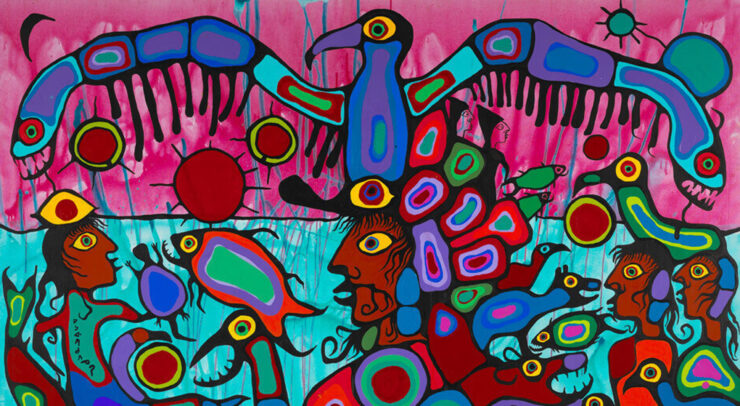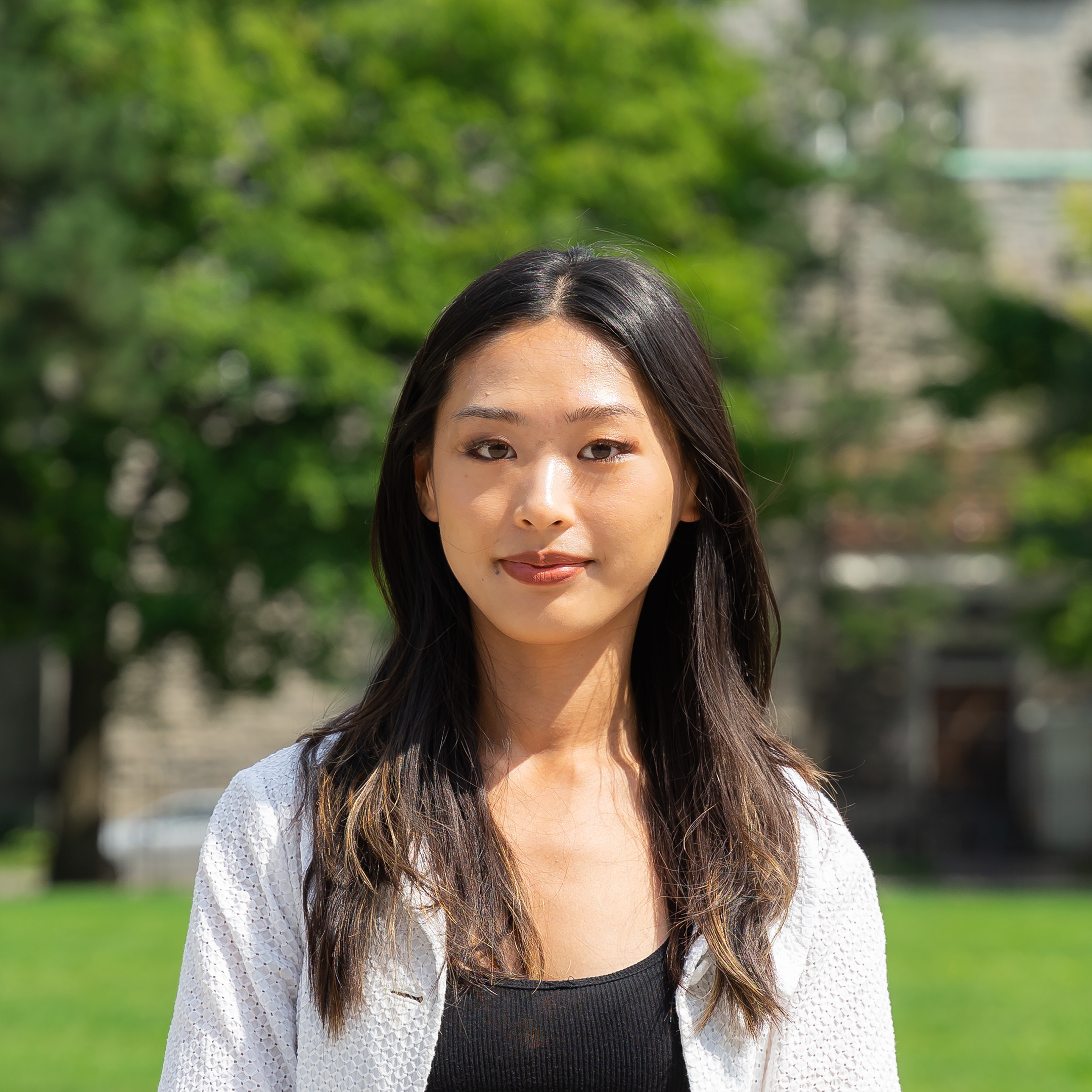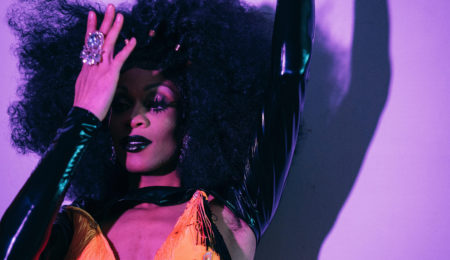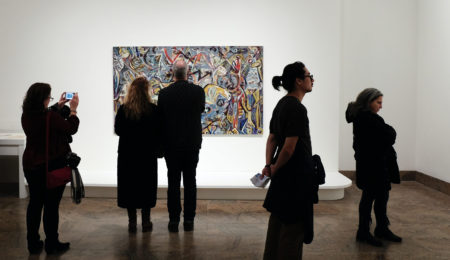Highlighting Indigenous artworks at the NGC
Many Indigenous peoples in Canada use the arts to transmit cultural messages through line, colour, and shape. Paint brushes, beads, needles, carving tools are some tools that empower them to visually convey shared histories and mark Indigenous resurgence. Exploring Indigenous art gives viewers a unique glimpse into Indigenous perspectives and their deep-rooted connections to their ancestors and traditional lands.
At the National Gallery of Canada, visitors can deepen their understanding of Indigeneity in Canada by exploring numerous Indigenous artworks on display within the Indigenous and Canadian Art section of the gallery.
Throughout the gallery, you can get a glimpse of how contemporary Indigenous artists have been able to balance and integrate Indigenous beliefs, cultures, and history with modernist and contemporary methods of painting and photography.
Mi’kmaq artist Jordan Bennett perfectly exemplifies a union of history and contemporary painting in his work “Histories Between and Through Time.” Bennett uses bright colours found in Mi’kmaq quillwork and familiar forms from Beothuk bone pendants to create a piece of contemporary abstraction. Not only does he unite and revive the lost history of the Beothuk people, but also he manages to create a colourful and geometric balance between stylistic elements.
Another room in the gallery holds multiple paintings from Norval Morriseau, otherwise known as “the Mishomis, or ‘grandfather,’ of contemporary Indigenous art in Canada.” His woodland style and vibrant colours are immediately recognizable and exude energy against the white gallery walls. Morrisseau’s paintings evoke feelings of interconnectedness and harmony between man and nature. Through the woodland style, he shares the cultural and worldly perspectives of the Anishinaabeg and his ancestors.
Morrisseau’s lasting influence and impact is felt throughout the style of other Indigenous artists. Roy Thomas has a distinctive woodland painting, “We’re All in the Same Boat,” displayed adjacent to Morrisseau’s phenomenal “Artist and Shaman Between Two Worlds,” with both paintings echoing themes of ecocentric unity.
Widely celebrated and respected Indigenous artists such as Daphne Odjig and Alex Janvier have their artworks on display as well. Janvier’s colours are full of expression, and although Odjig’s thick lines remind us of Morrisseau’s, they flow in graceful curves that are uniquely reminiscent of her technique.
Photos tell stories just as much as paintings do. In another room, Inuk artist, Barry Pottle, displays his Awareness series on one wall of the gallery. Photographs of the identification disks Inuit were forced to wear in the late 1940s and beyond, and the Inuit subjects wearing them, line the gallery wall. Pottle provokes discussion on how Inuit people in Canada have reclaimed or rejected their disc numbers, by creating visibility for those who proudly wear them on shirts, and others wearing them around their necks.
Numerous Inuit sculptures carved from ivory populate sections of the gallery space. They depict a plethora of subjects, movements, and symbols unique to the Arctic. Culturally significant clothing items are also displayed throughout the gallery.
Indigenous art is significant not simply for aesthetic value, but for its power in the ongoing process of decolonization in Canada. Art often acts as a window allowing us to observe and understand the cultures and the political or social identities of many. We must continue to shift our lens to include Indigenous perspectives when we discuss, curate, and philosophize about art. We enrich ourselves and others by giving space to Indigenous creators, and opening our minds to Indigenous history and ways of life.
Last Friday, Sept. 30 marked National Truth and Reconciliation Day, also known as Orange Shirt Day. Canadians commemorate this day to honour survivors of residential schools and those who lost their lives from colonial practices. However, our learning and unlearning of colonial practices are to be done all year.









